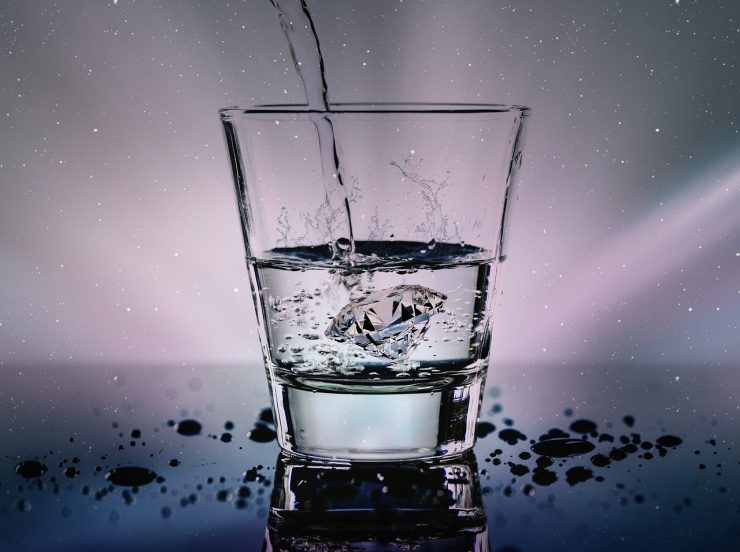Is All Water Created Equal? Navigating the Bottled Water Aisle
Ever wandered down the water aisle at the store and felt completely overwhelmed? You’re not alone. What used to be a simple decision—grab a bottle of water—has turned into a whole thing. Now you’re faced with options like spring water, volcanic water, alkaline water, sparkling water, smart water, flavored water, and good old purified water. Some bottles cost as much as a latte. So the big question is: are any of them actually worth it?
Sure, you could just stick with tap water. But depending on where you live, tap water may come with its own set of problems—things like fluoride, chlorine, trace medications, glyphosate, and even bacteria. If you’ve got access to clean well water, that might be a great option. But for many people, bottled water seems like the safer bet.
Let’s break down the most common types of bottled water so you can make a smarter choice next time you’re staring at that wall of bottles.
Alkaline Water
Alkaline water refers to water with a higher pH level than standard drinking water. pH is measured on a scale of 0 to 14, with lower numbers being more acidic and higher numbers being more alkaline. Our body’s ideal pH level is tightly regulated around 7.35–7.45.
The idea behind alkaline water is that modern diets and stress make our bodies too acidic, and drinking alkaline water helps balance that out.
Natural vs Artificial Alkaline Water
Natural alkaline water picks up minerals like calcium and magnesium as it flows over rocks, which increases its pH and boosts mineral content. This type of alkaline water is generally considered a healthy option.
Artificial alkaline water is made using a machine called an ionizer, which raises the water’s pH through electrolysis. It doesn’t usually contain the same minerals, and in some cases, could even deplete minerals from your body over time if you drink it regularly and exclusively.
Bottom Line: Natural alkaline water can be beneficial. Just be cautious with artificially-made versions—they may lack essential minerals and could do more harm than good if overconsumed.
Examples:
Natural: Icelandic Glacial, Rocky Mountain Spring Water
Artificial: Essentia, Smartwater Alkaline, Alkaline88
Mineral Water
Mineral water comes from natural springs and picks up minerals as it filters through layers of rock. These minerals—like calcium, magnesium, and potassium—can be great for your health, supporting everything from bone strength to heart function.
Some mineral water is also naturally carbonated, which adds that fizzy texture. Other brands add carbonation later during the bottling process. While carbonation slightly lowers the pH, it doesn’t make your body acidic—it’s mostly about taste.
To qualify as mineral water in the U.S., the water must contain at least 250 parts per million (ppm) of naturally occurring dissolved minerals.
Bottom Line: Mineral water is one of the healthiest types of water, offering natural electrolytes and trace minerals. Just check the label to confirm its source and mineral content.
Examples: Gerolsteiner, Perrier, Topo Chico, Pellegrino, Calistoga
Spring Water
Spring water is sourced from underground aquifers that naturally rise to the surface. It’s often bottled at the source and typically contains some minerals and electrolytes—though not as much as mineral water.
Here’s where it gets a little tricky: the term “spring water” isn’t very strictly regulated. Unlike mineral water, there’s no minimum requirement for mineral content, and quality varies depending on the source. Some “spring water” is just lightly filtered groundwater.
Artesian well water is similar—it comes from a pressurized underground source but doesn’t rise to the surface naturally. Again, quality depends entirely on where it comes from.
Bottom Line: Spring and artesian waters can be excellent if the source is clean and mineral-rich. Look for brands that clearly state where the water comes from and whether it’s been tested for purity.
Examples:
Spring: Evian, Mountain Valley, JUST Water, Icelandic Glacial
Artesian: Voss, Fiji, Hawaiian Springs, Whistler Glacial
Purified Water
Purified water typically comes from tap water that’s been filtered—most often using reverse osmosis (RO). This process removes up to 99% of dissolved solids, bacteria, and contaminants. However, it also removes beneficial minerals like calcium and magnesium.
Some brands add minerals back in for taste and health benefits. Others don’t, which means you’re drinking very clean, but very empty, water. RO water can also be slightly acidic, and drinking it exclusively without mineral replacement may not be ideal long-term.
Bottom Line: Purified water is safe and clean, especially if it’s re-mineralized. But it’s not necessarily better than other types—and in many cases, it’s just filtered tap water in a fancy bottle.
Examples: Dasani, Aquafina, Nestlé Pure Life
Distilled Water
Distilled water is ultra-purified through boiling and condensation. It removes everything—good and bad—including all minerals and electrolytes. It’s incredibly pure, but also very flat-tasting and can potentially pull small amounts of minerals from your body if consumed frequently.
While it may be good for your fish tank, humidifier, or steam iron, it’s not ideal for daily drinking unless you’re also getting plenty of minerals from food or supplements.
Some bottled distilled waters are enhanced with minerals during the bottling process, which improves taste and makes them more suitable for drinking.
Bottom Line: Not the best choice for everyday hydration unless minerals are added back in. Still, it’s better than contaminated tap water in areas where water quality is poor.
Examples: Smartwater (distilled with minerals added), Arrowhead Distilled, Eldorado Distilled
A Final Word on Bottled Water
New types of water hit the shelves all the time—protein water, antioxidant water, CBD water, vitamin-enhanced water, and more. No matter what you choose, it’s worth reading the label. Always check the water’s source, how it was treated, and what’s been added (or taken out).
And keep an eye on the packaging too. Water is a solvent, meaning it can pull chemicals from whatever container it’s in. That plastic bottle could be leaching compounds you don’t want in your body, especially if it’s been sitting in the sun. Glass is a safer bet when available.
Finally, remember—fancy branding doesn’t always equal better quality. Sometimes, your home well water or a simple in-home filtration system can be just as clean and even more nutritious.











